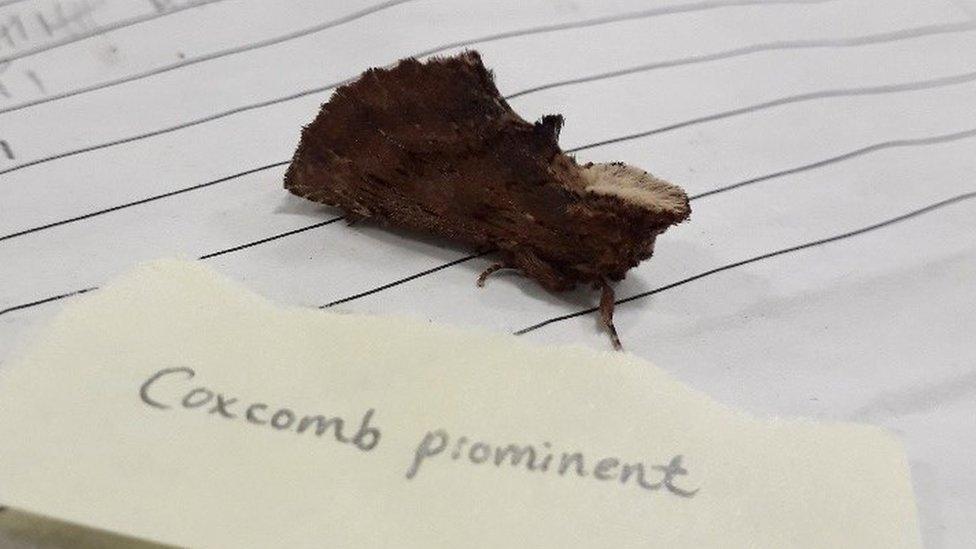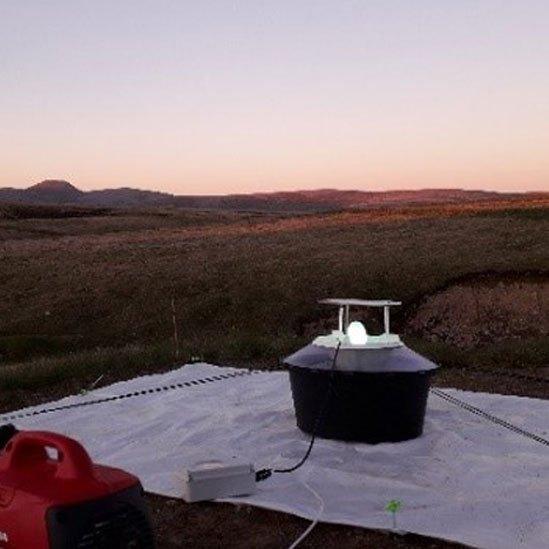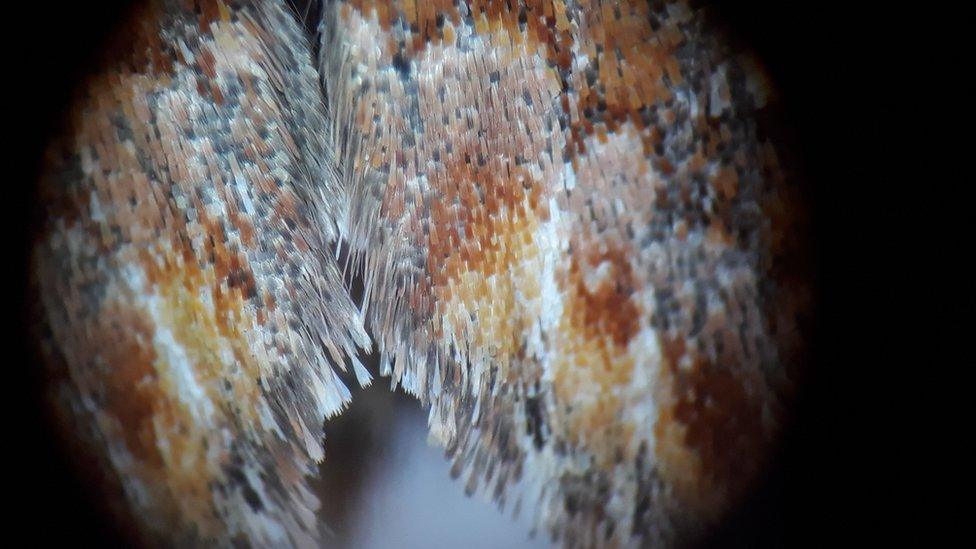Cairngorms moths study key to 200-year-long project
- Published

A coxcomb prominent moth trapped at Glenfeshie
Scientists are studying moth species in the Cairngorms as part of a 200-year vision to restore the area's natural habitats.
Cairngorms Connect, whose partners include the RSPB and Scottish Natural Heritage, is behind the ambitious conservation project.
Part of this work is a five-year survey of moths at different locations high in the mountains.
Researchers hope to detect what effect woodland restoration has on the moths.

A moth trap in Glenfeshie
The scientists are setting moth traps at altitudes of 300m (984ft), 500m (1,640ft), 700m (2,297ft) and 900m (2,953ft).
The locations including Glenfeshie, near Kingussie, where there has been "substantial" planting of broadleaf trees.
Researchers said several species of moth associated with broadleaf trees have been found there, including lesser swallow prominent and coxcomb prominent.
Cairngorms Connect said catching moths at higher altitudes was still "a relatively novel practice". Ropes have been used to keep the traps from being blown away in bad weather.
Further surveys could follow in 10, 50, and even 200 years' time, said the partnership.
By the year 2216, the project aims to restore large areas of woodland and peatbog.

Wing scales of a pine beauty moth viewed under a microscope